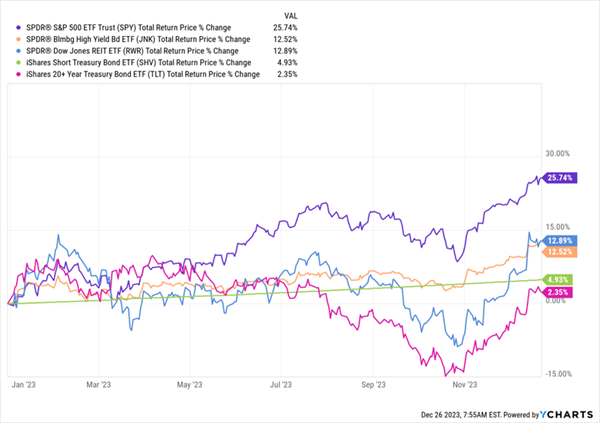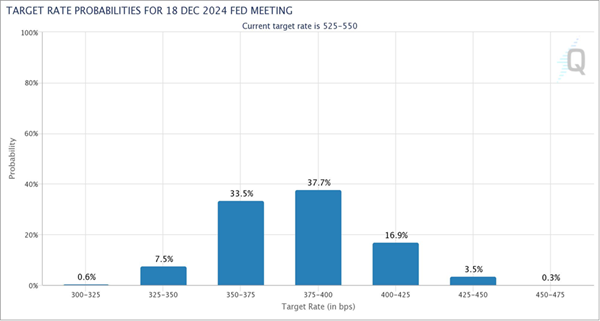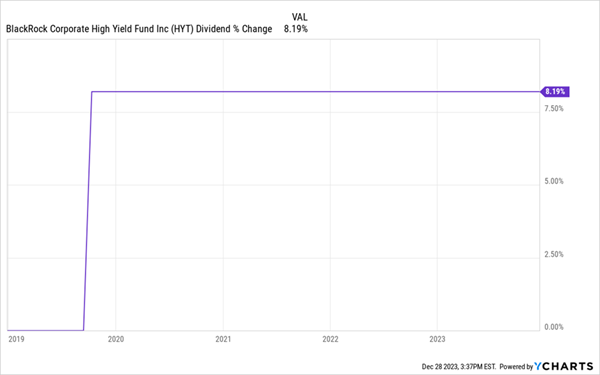Think back one year for a moment. You’ll surely recall that back in early ’23, the media was in high dudgeon, warning about an oncoming recession.
It never happened, of course, as we gleaned by simply following the data at my CEF Insider high-yielding investing service. But the “hangover” from that missed prediction is still—still!—creating opportunities for us to pick up high-yielding closed-end funds (CEFs) at bargain prices.
Here’s how: now that we’re 12 months out from those incorrect doomsday predictions, many media outlets are backtracking. Consider this recent quote from Bloomberg Opinion columnist Nir Kaissar:
“This time last year, a lot of people were convinced the US would slide into recession in 2023. At Bloomberg Opinion alone, we published columns such as ‘Money Can’t Buy You Delay From a Recession Forever’ and ‘The Roaring Twenties Are Now Over. Time to Get Real.’ Instead, the economy posted surprisingly strong growth this year.”
While Kaissar acknowledges that Bloomberg was off the mark, the whole saga left investors confused. The Wall Street Journal writes that Americans “put their money everywhere” in 2023. This really just means Americans realized they’d been misguided by the media in selling in 2022 and slowly put money back into the market in 2023.
Which has been great for just about every asset class. As I write this in the waning days of December, the S&P 500 (shown by the performance of its benchmark ETF in purple below) has posted a 25.7% total return. Real estate investment trusts (REITs), in blue, have returned about half that, in line with corporate bonds (in orange).
Bonds, Stocks, REITs … All Had a Banner 2023
 That’s not bad, but the symmetry between bonds and REITs is unusual; it tells us this is just people putting money back into assets they erroneously took out in 2022, due to fear-mongering headlines.
That’s not bad, but the symmetry between bonds and REITs is unusual; it tells us this is just people putting money back into assets they erroneously took out in 2022, due to fear-mongering headlines.
Meanwhile, we see long-term US Treasuries (in pink) seeing modest gains, alongside slightly higher gains for short-term US Treasuries (in green). This is what you’d expect from a market readying for interest rate cuts in 2024, which is the expectation in the options market, too.
 Source: CME
Source: CME
The market expects interest rates to be cut by nearly a third in 2024, either because a recession is starting or because growth is slowing down. Those are slightly different things, and both are situations where the market’s mood could turn sour.
Of course, before that we have a lot of time for stocks to continue to recover—a trajectory that’s continued throughout December, with a Santa Claus rally. Which is why stocks remain attractive now.
But what if the market mood turns suddenly, like it did at the start of 2022? Well, in that scenario, we really want to emphasize income. Which is why the best buys on the market right now are corporate bonds—specifically those purchased through CEFs.
We’re taking the CEF route because many corporate bonds are priced to perfection, and CEFs let us buy for less than the market price, thanks to their discounts to net asset value (NAV, or the value of the bonds in their portfolios). We’ll see this discount—which is only available with CEFs—in action with the 9.8%-paying fund we’ll discuss below
By buying through a heavily discounted bond CEF, we’re getting a fund that’s underpriced relative to the market’s increasing optimism (which could easily tip into over-enthusiasm). And we’re getting high-yield assets before rates are cut and bond yields fall, moves that would make the high-yield assets we’ve already bought even more valuable.
Truth is, there are many CEFs specializing in corporate bonds that:
- Are diversified among hundreds of issuers;
- Are currently trading for far less than NAV;
- Offer high yields, thanks to the surge in interest rates over the last two years.
There are a number of funds that fit the bill for this market moment, and a standout is the BlackRock Corporate High Yield Fund (HYT), a $1.4-billion fund that yields 9.8% and trades at a 2.3% discount to NAV.
The fund is diversified and full of income-producing assets issued at times when interest rates were high. Those are just a few reasons to consider HYT as a solid foundation for an income portfolio in 2024, as we move into an era of falling rates.
One particularly interesting thing about HYT is that it has been climbing after hitting a floor of demand: its discount to NAV has been shrinking as the bond market rallies. Meanwhile, payouts went up over the tumultuous last five years, and payouts are more durable than they’ve been for years, thanks to the high-rate bonanza of the current corporate-bond market.
More Income Helps HYT Investors Sleep Well at Night
 HYT is only getting started, which is why it’s a strong buy for 2024. And it’s one of many attractive bond CEFs for 2024, many of which is still on sale in the wake of 2022’s weakness.
HYT is only getting started, which is why it’s a strong buy for 2024. And it’s one of many attractive bond CEFs for 2024, many of which is still on sale in the wake of 2022’s weakness.
— Michael Foster
4 More Top 2024 “Dividend Deals” Yielding 9.9% [sponsor]
As I just mentioned, this market setup is perfect for CEFs, with plenty of these high-paying funds still on sale.
The CEF market is literally the last place you can get deals like this: I’m talking discounts of 10%+ on funds yielding north of 9%, with many paying dividends monthly, too!
The 4 funds I’m pounding the table on now are perfect examples. They’re trading at such wide discounts I’m calling for 20%+ price upside this year, in addition to their 9.9% average yields! Click here to read more about these 4 top buys for 2024 and download a FREE Special Report revealing their names and tickers.
Source: Contrarian Outlook

